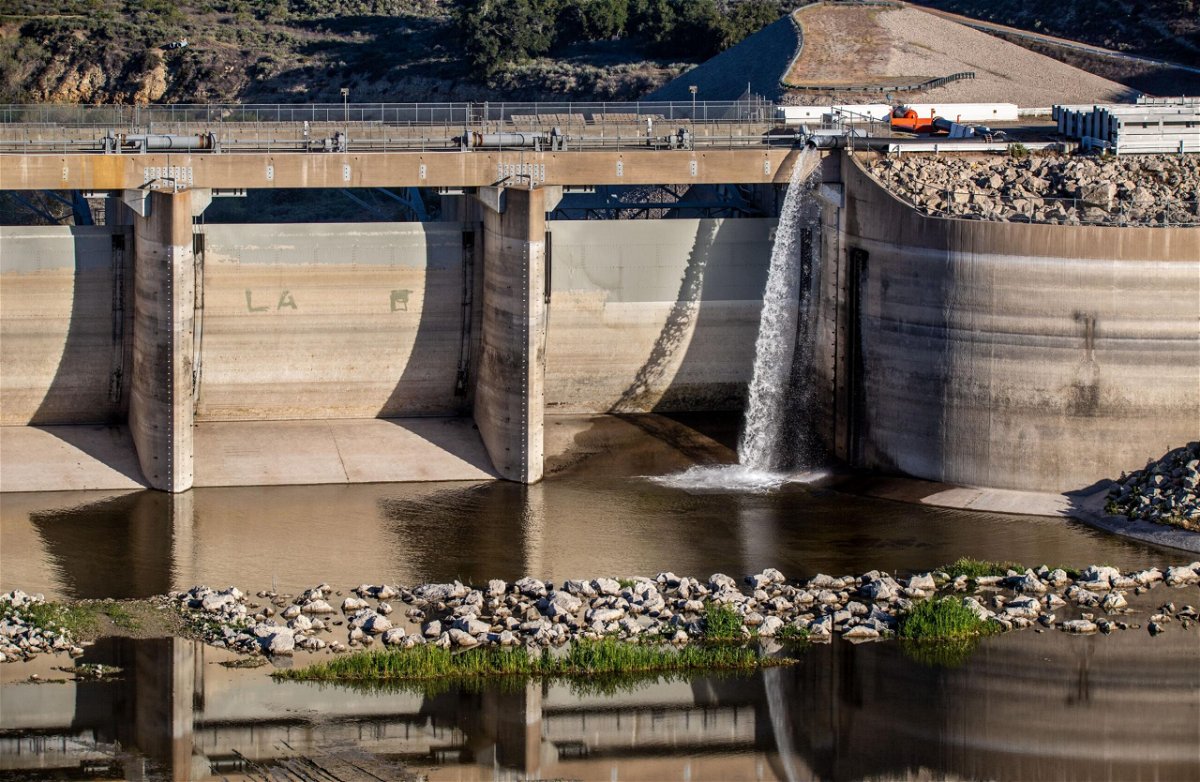Officials worry Southern California won’t have enough water to get through summer without unprecedented cuts

Cachuma Lake on California's Central Coast releases water downstream to recharge groundwater for agriculture interests and communities in the Santa Ynez Valley.
By Stephanie Elam, CNN
As Southern Californians brace for unprecedented water restrictions, officials worry some communities won’t have enough water to get through the summer — at least not without residents and businesses significantly cutting back on their usage.
The state’s top natural resources officer told CNN that California’s water emergency clearly shows the climate crisis in action.
“Some would consider this a wake-up call. I disagree,” Wade Crowfoot, California’s secretary for natural resources, told CNN. “The alarm’s already gone off.”
Scientists reported earlier this year that the West’s current megadrought is the worst in at least 1,200 years and that the human-caused climate crisis has made it 72% worse.
For the past two decades, weather in the West has been characterized by extended periods of drought with fleeting bursts of wintertime precipitation which have never been enough to overcome the region’s severe water shortage.
In California, snow typically builds up in the Sierra Nevada throughout the winter, storing precious water that gradually melts through the spring and early summer and replenishes reservoirs. In a normal year, snow melt would provide 30% of the state’s water, according to the Department of Water Resources.
But by April, at the end of this year’s wet season, California’s snowpack was only 4% of normal. By May there was no snow at all.
“Climate change is here and it’s been here across the American West,” Crowfoot told CNN. “Climate change is accelerating in alarming ways and faster than scientists predicted even 10 or 20 years ago and that means we have to move very quickly as governments, as water agencies, as communities.”
Metropolitan Water District of Southern California, a regional water wholesaler, sells water to 26 member agencies which then serve some 19 million people in six counties.
In light of the foreseen shortage, Metropolitan, for the first time in its nearly 100-year history, is mandating that restrictions be put in place for parts of Los Angeles, San Bernardino and Ventura counties that receive water through the State Water Project, which pipes water down from the Northern Sierra Nevada Mountains and the Sacramento-San Joaquin River Delta. They have two options: they can either implement volumetric limitations, or demand customers reduce their outdoor watering to one day a week by June 1.
At the same time, the water district is asking all Southern Californians to cut their usage by 35%.
“The action has to happen now because we can’t wait until the middle of the summer,” Adel Hagekhalil, the general manager of the Metropolitan Water District of Southern California, told CNN. “It’ll be too late, and I don’t want anybody to turn on the faucet and not have water.”
Targeting outdoor watering could have a large impact on water conservation, officials say. If not enough water is saved, Metropolitan Water District says it is prepared to ban all outdoor watering on September 1.
“If you look at water usage right now, 30 to 70% of the water that is consumed in the home or in a business or an institution is mainly in the landscaping outdoors,” Hagekhalil said. “We need to right now conserve every drop, re-prioritize how we use water to make sure it’s only for basic health services, our livelihood, our indoor usage — and not watering our lawn.”
The Metropolitan Water District also gets 25% of its water from the Colorado River, where the West’s megadrought is starkly visible. The river system supplies water to some 40 million people across seven states and Mexico, and its two major reservoirs — the country’s largest — are draining rapidly.
The federal government announced Tuesday it is taking unprecedented, emergency steps to help boost water levels at Lake Powell, and buy the surrounding communities more time to plan for the very real possibility the reservoir, the country’s second-largest, will soon run out of water.
At Lake Mead, the waterline has dropped so low in the lake that it has exposed a water intake valve that had been in service since 1971. The Southern Nevada Water Authority activating a newer, low-lake pumping station to still be able to access water for its customers.
“But (the pumping station) coming online is also a symbol of how serious the situation is on the Colorado River right now,” said Colby Pellegrino, deputy general manager of resources for Southern Nevada Water Authority. “Reservoir levels are lower than they’ve ever been in both Lake Powell and Lake Mead since the time that they filled.”
The-CNN-Wire
™ & © 2022 Cable News Network, Inc., a WarnerMedia Company. All rights reserved.